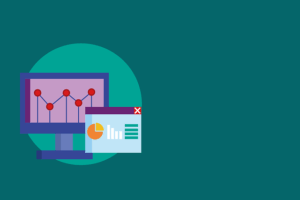Internal linking is a powerful SEO strategy for WordPress sites, enhancing visibility and user experience. By strategically linking relevant pages, you guide users and search engines through content, distributing link equity and boosting page authority. Using tools with intuitive interfaces, organize your site with clear categories and descriptive anchor text, targeting keywords like "internal linking for SEO for WordPress." Measure success using Google Search Console and Analytics to track CTR, backlinks, and user behavior, refining content for improved rankings.
In today’s digital landscape, internal linking plays a pivotal role in enhancing website navigation and boosting SEO performance for WordPress sites. This article serves as a comprehensive guide, exploring the intricacies of internal linking and its impact on search engine optimization. We’ll delve into strategic techniques using transactional keywords, site structure optimization, and powerful tools to elevate your content’s visibility. By implementing best practices and tracking performance metrics, you can revolutionize your website’s user experience and SEO strategy.
- Understanding Internal Linking: Why It Matters for SEO
- The Role of Transactional Keywords in WordPress Landing Pages
- Optimizing Your Site Structure for Effective Internal Linking
- Choosing the Right Tools to Enhance Internal Linking
- Best Practices for Implementing Internal Links on Your WordPress Site
- Measuring Success: Tracking Internal Link Performance
Understanding Internal Linking: Why It Matters for SEO

Internal linking is a fundamental SEO strategy that plays a pivotal role in enhancing your website’s visibility and performance on search engines like Google. It involves creating links within your WordPress site that connect relevant pages, allowing users to navigate seamlessly while search engine crawlers can efficiently explore and index content. This technique isn’t just about improving user experience; it’s a powerful tool for optimizing your site’s architecture.
When you implement internal linking effectively, you tell search engines which pages are most important and how they relate to one another. This helps in distributing link equity across your site, boosting the authority of individual pages and improving their rankings. For instance, linking to an informative ‘How-To’ guide from relevant product pages can increase the visibility of both, providing a better user experience and potentially driving more organic traffic through SEO optimization.
The Role of Transactional Keywords in WordPress Landing Pages

In the realm of WordPress landing pages, transactional keywords play a pivotal role in enhancing search engine optimization (SEO) efforts, particularly when it comes to internal linking. These keywords serve as powerful signals to both search engines and website visitors, indicating the intent and context of your content. When crafting landing pages focused on presenting tools for internal linking, incorporating relevant transactional terms becomes crucial. For instance, phrases like “internal linking for SEO tutorial” or “optimizing internal linking for SEO” can effectively communicate the page’s purpose, making it more discoverable to those seeking guidance on improving website architecture and user navigation.
By strategically placing these keywords within headings, meta descriptions, and body content, WordPress site owners can ensure their landing pages rank higher in search results for targeted queries. An internal linking for SEO SEO strategy that leverages transactional keywords allows search engines to understand the relationship between pages, fostering better crawlability and indexing. This, in turn, enables visitors to navigate seamlessly through relevant resources, ultimately enhancing user experience and encouraging longer visits, which are all vital factors contributing to improved SEO optimization.
Optimizing Your Site Structure for Effective Internal Linking

Optimizing your site structure is a vital step in enhancing your WordPress website’s internal linking for SEO. A well-structured site allows search engines to understand and index your content more efficiently, which, in turn, improves your overall SEO strategy. Start by creating a clear hierarchy of pages using categories and subcategories that reflect the natural flow of information on your site. This not only makes it easier for users to navigate but also helps search engine crawlers identify relevant content.
Implementing a logical internal linking structure is key to SEO optimization. Link to related posts within your content, ensuring each piece of content has at least a few strategic backlinks. This can be done by using anchor text that accurately represents the linked page’s content, making it beneficial for both users and search engines. Remember, an effective internal linking strategy should facilitate a seamless user experience while also signaling to search algorithms the importance and relevance of your website’s pages.
Choosing the Right Tools to Enhance Internal Linking

Selecting the appropriate tools is a pivotal step in enhancing your site’s internal linking for SEO in WordPress. The right software can streamline the process, making it more efficient and effective. Look for tools that offer intuitive interfaces, allowing you to easily create, manage, and optimize your internal links. These platforms often provide features such as anchor text analysis, link performance tracking, and visual link mapping, which are invaluable for strategic internal linking for SEO optimization.
When choosing an internal linking tool, consider its compatibility with WordPress and the level of customization it offers. A comprehensive internal linking for SEO tutorial within these tools can be beneficial for beginners, ensuring they grasp the fundamentals of proper internal linking practices. Remember, the goal is to improve user experience while boosting your site’s search engine rankings through strategic internal linking for SEO SEO.
Best Practices for Implementing Internal Links on Your WordPress Site

Implementing effective internal links is a powerful strategy to enhance your WordPress site’s SEO performance. When done right, it improves user experience and allows search engines to crawl and understand your content better. Here are some best practices to optimize internal linking for your website:
Start by creating a structured navigation system. Organize your pages into logical categories and use relevant anchor text when linking between them. For instance, if you have a blog about ‘Digital Marketing,’ link to specific articles like ‘SEO Strategies’ or ‘Social Media Tips’ with descriptive text such as “Learn more about SEO here” or “Explore our guide on social media marketing.” Ensure that each internal link provides value and context to both the user and search engines. Additionally, consider using a SEO plugin to automatically generate sitemaps, making it easier for search engine crawlers to navigate your site’s architecture. Regularly update these links to keep your site fresh and relevant.
Measuring Success: Tracking Internal Link Performance

Measuring success is a crucial step when implementing internal linking strategies for WordPress sites. By tracking the performance of these links, website owners can gain valuable insights into their SEO efforts. One effective method is to utilize Google Search Console and Google Analytics tools. These platforms provide data on click-through rates (CTR) from internal links, allowing marketers to identify popular content and understand user behavior. For instance, a high CTR from a specific internal link suggests that the linked page offers valuable information or effectively addresses user queries.
Additionally, monitoring backlinks and their sources can enhance SEO optimization. Analyzing which pages are gaining more internal links can help in identifying high-quality content and potential areas for improvement. This data is particularly useful when creating an internal linking tutorial for beginners, as it demonstrates the practical application of these strategies. By regularly assessing internal linking performance, WordPress users can refine their content and improve overall SEO for better search engine rankings.
